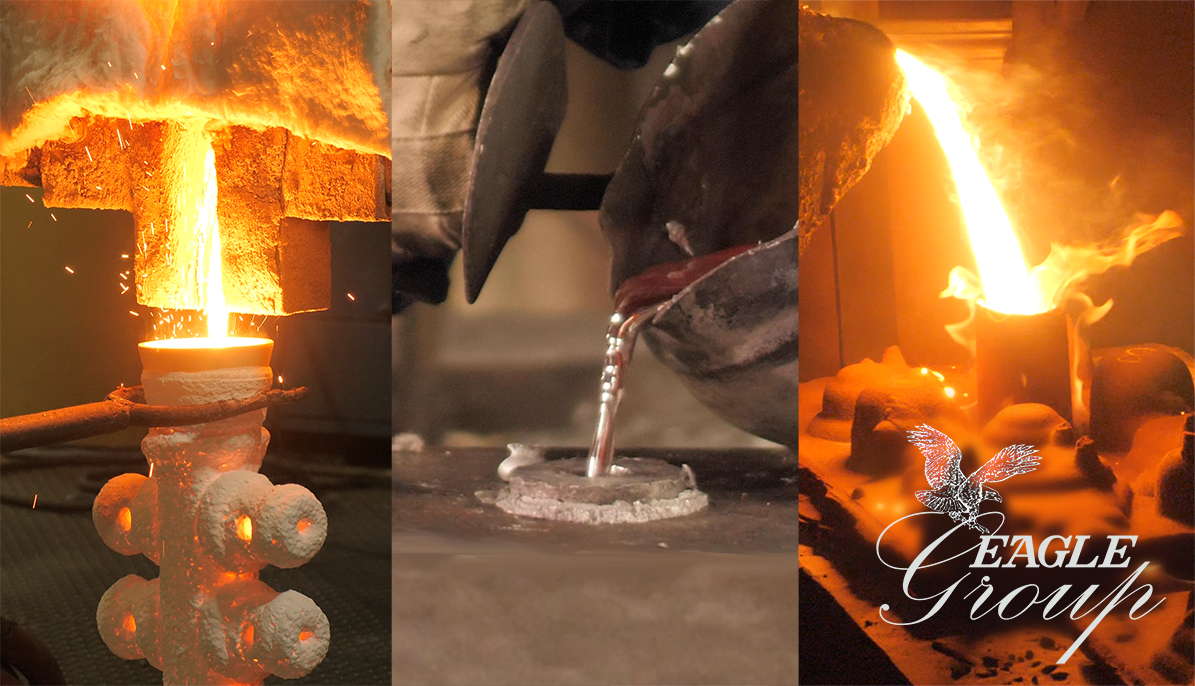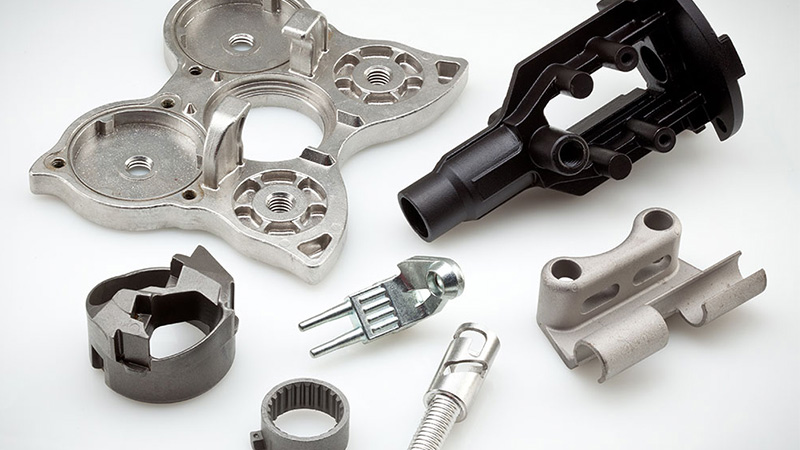A Deep Study the Different Sorts Of Metal Casting and Their Uses
Metal Casting includes various methods, each tailored for particular applications and demands. From the affordable sand casting technique to the accuracy of investment spreading, each procedure has special benefits. Pass away casting sticks out in high-volume manufacturing scenarios, while lost foam spreading presents ingenious style possibilities. Furthermore, irreversible mold and mildew spreading is identified for its resilience. Recognizing these methods opens up a window right into their practical uses and implications in various sectors. What lies beneath the surface area of these casting strategies?
Sand Spreading: A Functional and Economical Method
Although numerous casting methods exist, sand casting stays among one of the most flexible and cost-efficient techniques in the metalworking industry. This method utilizes a blend of sand and a binding representative to produce molds, allowing for the manufacturing of components in diverse sizes and forms. Sand spreading is especially useful for little to tool production runs, as it calls for marginal ahead of time investment in tooling contrasted to various other spreading methods.
The process starts with the development of a mold and mildew, where molten steel is gathered to develop the desired things as soon as cooled down. Its adaptability enables using various steels, consisting of iron, steel, and aluminum. On top of that, sand spreading can accommodate complicated geometries, making it appropriate for a variety of applications, from auto parts to detailed artistic items. On the whole, sand casting's efficiency and adaptability solidify its significance in the production landscape.
Financial Investment Spreading: Precision and Information for Intricate Forms
Investment casting stands out as a method renowned for its capacity to produce extremely detailed and complex components. This procedure entails producing a wax pattern that is coated with a ceramic covering, which is after that heated to eliminate the wax and set the shell. The outcome is a specific mold and mildew that can catch complex geometric forms with amazing precision.
This casting strategy is specifically useful for producing get rid of slim wall surfaces, fine features, and limited resistances, making it suitable for industries such as aerospace, automotive, and medical tools. Financial investment spreading fits a range of steels, including stainless-steel, aluminum, and titanium, allowing makers to satisfy details material requirements.
Additionally, the process decreases machining demands post-casting, which can improve effectiveness and minimize production expenses. Overall, financial investment spreading is a recommended option for applications where precision and information are extremely important.
Die Casting: High-Volume Production With Excellent Surface End Up

Die spreading is a highly effective production process that excels in creating large volumes of steel parts with remarkable surface area finishes. This method entails compeling liquified steel into a mold dental caries under high stress, permitting quick production cycles and harmony in the completed products. Generally utilized materials consist of magnesium, zinc, and light weight aluminum, which offer superb mechanical buildings and deterioration resistance.
Pass away spreading is particularly useful for markets such as vehicle, electronic devices, and durable goods, where precision and high quality are vital. The process makes it possible for complex layouts, minimizing the requirement for added machining and ending up procedures. In addition, the smooth surface areas produced with die spreading often need marginal post-processing, leading to lower overall production costs. As a high-volume manufacturing strategy, pass away casting is suitable for suppliers looking for performance without jeopardizing on high quality, making it a favored selection for many applications throughout different industries.
Lost Foam Spreading: Innovative Strategy for Intricate Designs
Lost foam spreading revolutionizes the production of complex metal components by making use of an one-of-a-kind procedure that gets rid of the need for standard molds. Rather of traditional mold-making, this method uses a foam pattern that is coated with a refractory product. Once the pattern is established, liquified steel is poured straight right into the mold, creating the foam to evaporate and leave behind an accurate cavity for the metal to load. This cutting-edge approach enables for elaborate layouts and in-depth attributes that may be testing to achieve with various other casting methods.
In addition, lost foam spreading can decrease waste and energy consumption, making it an ecologically friendly option. Industries such as automobile and aerospace advantage considerably from this technique, as it supports the production of light-weight parts with complicated geometries. On the whole, lost foam spreading attracts attention for its capability to provide top notch, you could try these out personalized steel components efficiently.
Irreversible Mold Casting: Longevity and Consistency in Metal Components
Irreversible mold spreading is an extremely effective technique for producing consistent and resilient steel parts, leveraging multiple-use molds that are usually made from metals such as iron or steel. This spreading procedure involves pouring molten metal right into these mold and mildews, which are preheated to improve product find this high quality and reduce flaws. Making use of recyclable mold and mildews not only minimizes waste however additionally permits higher manufacturing rates, making it financially beneficial for makers.
The resulting elements display exceptional dimensional precision and surface area finish, making them perfect for applications in automobile, aerospace, and commercial equipment. Furthermore, permanent mold and mildew casting can fit a selection of alloys, further expanding its convenience. The toughness of the actors components is boosted due to the controlled air conditioning prices that advertise finer grain frameworks. Overall, this spreading technique sticks out for its ability to create top notch metal parts that fulfill extensive efficiency requirements, guaranteeing integrity popular atmospheres.
Frequently Asked Questions
What Materials Can Be Utilized in Different Steel Casting Processes?

Numerous materials can be used in Metal Casting processes, including light weight aluminum, bronze, zinc, and iron. Each product provides unique buildings, affecting the casting technique's efficiency, toughness, and suitability for different applications in production.
Just How Do Casting Methods Influence the Mechanical Features of Metals?
Casting methods significantly influence the mechanical properties of steels, affecting aspects like solidity, ductility, and stamina. Variants in cooling down rates and mold products can cause different microstructures, ultimately influencing the performance of the last item.
What Are the Ecological Effects of Steel Casting Procedures?
Metal Casting processes can cause air and water air pollution, source depletion, and considerable energy usage (Wisconsin Aluminum Foundry). Additionally, the generation of waste products and greenhouse gas discharges substantially adds and impacts the environment to environment change
Exactly how Do You Pick the Right Spreading Method for a Task?
Selecting the right casting technique entails reviewing project requirements, material homes, complexity, and manufacturing volume. Elements like cost performance, surface quality, and preparation additionally play essential duties in figuring out the most appropriate strategy.
What Safety Safety Measures Should Be Taken During Metal Casting Procedures?
During Metal Casting procedures, safety preventative measures include go to this site wearing protective equipment, making certain proper ventilation, carrying out tools evaluations, maintaining a tidy workspace, and having emergency procedures in position to deal with prospective risks like burns or hazardous fumes.
From the cost-effective sand spreading technique to the precision of investment spreading, each process has distinct advantages. Pass away casting is an extremely reliable production process that stands out in producing huge quantities of steel parts with phenomenal surface finishes. Lost foam casting changes the production of complex metal parts by making use of an one-of-a-kind procedure that removes the need for standard mold and mildews (Wisconsin Aluminum Foundry). Long-term mold casting is a very efficient method for generating sturdy and constant steel components, leveraging reusable mold and mildews that are normally made from metals such as iron or steel. Various products can be utilized in Metal Casting processes, consisting of aluminum, iron, bronze, and zinc